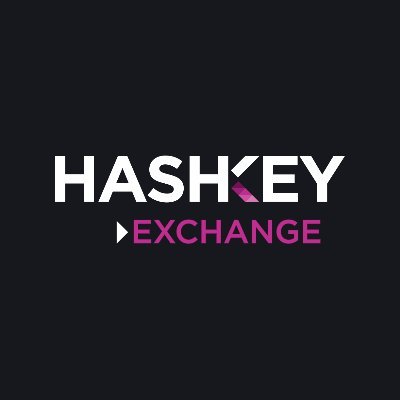Weekly Report | Grayscale Wins Lawsuit Against SEC; Coinbase Founder Highlights Ten Promising Directions
Organizer: Cookies, ChainCatcher
"What Important Events Happened This Week (8.28-9.3)"
1. Grayscale Wins Lawsuit Against SEC
According to court documents, Grayscale won its lawsuit against the SEC. Data from CCData shows that in the two days following the court victory on August 29 and 30, Grayscale's GBTC fund saw a significant increase of $1.17 billion in assets under management (AUM). Grayscale's total AUM reached $17.4 billion.
Grayscale CEO Michael Sonnenshein stated that it is still uncertain whether Grayscale needs to refile its spot Bitcoin ETF application with the SEC after winning the lawsuit against the U.S. Securities and Exchange Commission (SEC).
Previously, ChainCatcher reported on October 12 last year that Grayscale Investments had submitted an opening brief in its lawsuit against the SEC for rejecting its application for a spot Bitcoin exchange-traded fund. Grayscale's Chief Legal Officer Craig Salm stated that there is "no difference between spot ETFs and futures ETFs in the context of Bitcoin," as "the pricing of CME Bitcoin futures is itself lower than the spot Bitcoin market." The brief claimed that the SEC failed to demonstrate why there would be a fundamentally different treatment for Bitcoin futures ETPs and spot Bitcoin ETPs, thus violating the most basic requirements of the U.S. Administrative Procedure Act. (Source link)
2. HashKey Exchange: BTC/USD and ETH/USD Trading Pairs Opened to Retail Investors
According to an official announcement, HashKey Exchange has opened Bitcoin (BTC) and Ethereum (ETH) deposit, withdrawal, and trading services to retail investors, and has officially launched BTC/USD and ETH/USD trading pairs for retail investors. HashKey Exchange also stated that it does not exercise voting rights related to virtual assets on behalf of its users, and users wishing to exercise any voting rights related to their virtual assets must withdraw the corresponding assets from the platform. (Source link)
3. Canaan's Q2 Financial Report: Total Revenue of $73.9 Million, QoQ Growth of 33.7%
According to Canaan's Q2 2023 financial report, total revenue for Q2 was $73.9 million, a 33.7% increase compared to $55.2 million in Q1 2023; the company's total computing power sales in Q2 2023 reached 6.1 million TH/s, a 44.2% increase compared to Q1 2023.
Of this, revenue from mining machine sales was $57.8 million, and mining revenue was $15.9 million; the company holds 1,125 Bitcoins and has cash and cash equivalents of $66.1 million. The company expects total revenue for Q3 2023 to be approximately $30 million. (Source link)
4. Circle to Launch Native USDC on Optimism Next Week, Plans to Launch Native USDC on Base Mainnet
According to official news, Circle announced that it will launch native USDC on Optimism next week. Before the launch of native USDC, the USDC Ethereum bridging form on the block explorer will be renamed to USDC.e. Circle will also contact ecosystem applications to make the same changes to their application UI and documentation. Additionally, Optimism will work with ecosystem applications to provide a smooth transition of liquidity from USDC.e to USDC over time.
Circle also plans to launch native USDC on the Base mainnet. Base will collaborate with ecosystem applications to provide a smooth transition of optional liquidity from cross-chain USDC (USDbC) to USDC over time. The Base Bridge will not change immediately and will continue to operate normally. (Source link)
5. Mantle Network Plans to Provide $238 Million in Liquidity Support for Ecosystem Applications, RWA Stablecoins, and Cross-Chain Bridges
The Ethereum Layer 2 network Mantle Network community has proposed using the Mantle Treasury to promote ecosystem development, which includes providing up to $160 million in liquidity support for applications, up to $60 million in seed liquidity for RWA-backed stablecoins, and up to $18 million in liquidity support for third-party cross-chain bridges.
The proposal also authorizes the economic committee to collaborate with service providers and top on-chain system trading companies to support the deployment of the above strategies. This includes discussions with various parties and negotiating cooperation terms or other business agreements regarding liquidity deployment when necessary. The economic committee is solely a decision-making body and is not allowed to directly handle treasury assets. (Source link)
6. Animoca Brands 2022 Financial Report: Total Booked Revenue Reaches $402 Million, Holds Over $2 Billion in Digital Assets
Animoca Brands released its FY 2022 performance report, stating that as of December 31, 2022, Animoca Brands' total booked revenue for the year (including token sales, NFT sales, and revenue from other non-blockchain activities) reached approximately $402 million, a year-on-year increase of over 38%. The company has a minority equity portfolio consisting of over 380 portfolio companies.
Animoca Brands currently has a cash and stablecoin balance of approximately $191 million and holds digital assets worth over $2 billion, including The Sandbox tokens and reserves (approximately $469 million) as well as other Animoca brand-related tokens such as PROS, ASTRAFER, QUIDD, PRIMATE, REVV, TOWER, GMEE, etc. (approximately $1.6 billion). (Source link)
7. Binance Asia-Pacific Head Leon Foong Resigns, Previously Led Binance's Expansion into Markets like Korea and Japan
Bloomberg cited sources saying that Binance Asia-Pacific head Leon Foong has resigned. Foong had previously led Binance's expansion into markets such as Korea, Japan, and Thailand.
Recently, following a series of allegations against Binance by regulators in the U.S. and Australia, several Binance executives, including Chief Strategy Officer Patrick Hillman and General Counsel Hon Ng, have also left the company. (Source link)
8. Chinese People's Court Report: Virtual Currencies Are Legally Protected, Related Funds and Properties Cannot Be Uniformly Confiscated or Returned
The People's Court of Siming District, Xiamen City, Fujian Province published an article in the China Court Newspaper titled "Identification of the Property Attributes of Virtual Currencies and the Disposal of Related Assets," analyzing the criminal law attributes of virtual currencies. It stated that virtual currencies have economic attributes that can be classified as property, and current laws and policies do not classify virtual currencies as illegal items. Therefore, under the current legal and policy framework, virtual currencies held by relevant entities in China still belong to legal property and are protected by law.
The article suggests handling related funds and properties from a basic position of legality, stating that for criminal acts involving virtual currencies, related funds and properties cannot be uniformly confiscated or returned, and should be treated differently based on a unified criminal and civil legal order, achieving a balanced protection of individual property rights and social public interests. (Source link)
9. ChainCatcher Launches "2023 Catcher List," Now Open for Nominations
ChainCatcher and RootData will continue to support projects and institutions on the list to reach broader markets and enhance the influence and reputation of the list among investors, entrepreneurs, and communities.
The nomination period for this list is open from now until October 15, and the final results will be announced at the "Web3 100 Summit" hosted by ChainCatcher on November 24 in Hanoi, Vietnam. Click here to register (Google Docs).
10. Data
- The balance of Bitcoin on trading platforms is 2,256,045 coins, a near five-year low.
- Over $14.6 billion in USDT related to Southeast Asia flowed into trading platforms in 2022.
- Telegram Bots' trading volume has exceeded $400 million, with nearly 100,000 users.
- Last week, digital asset investment products saw an outflow of $168 million, the largest outflow since March.
- An early buyer sold 26.3 billion PEPE at a loss of 43.4%.
- Aave V3's net borrowing amount exceeded $100 million in a single day, setting a historical record.
- The TVL of the Velodrome fork protocol Aerodrome exceeded $200 million.
"What Exciting Articles Are Worth Reading This Week (8.28-9.3)"
On Tuesday, cryptocurrency asset management company Grayscale achieved a brief victory in providing a spot Bitcoin ETF, as the U.S. Federal Circuit Court ordered the SEC to reconsider its decision to reject Grayscale Investments' application to convert its Bitcoin Trust (GBTC) into an exchange-traded fund (ETF). Subsequently, Bitcoin prices surged 7% to nearly $28,000, bringing some comfort to the struggling crypto industry.
2. "Reviewing Friend.tech After 20 Days: 0 Cost to Claim About 2,500 ETH, Was the Hype Pre-planned?"
In just 20 days since its launch, Friend.tech has become a Web3 social application that encompasses many hot topics. This seemingly innovative product, which is essentially a rehash of old ideas, has gained popularity in a somewhat inexplicable manner, suggesting that its success may not be entirely organic but rather a result of careful planning.
As the Ethereum L2 circular ecosystem continues to gain popularity, one often overlooked aspect is the sequencer. Sequencers are responsible for transaction ordering, and using sequencers through rollups can provide a better user experience, lower fees, and faster transaction confirmations. However, the issue is that, so far, all major Ethereum L2 companies have found it most convenient, user-friendly, and cost-effective to run their own centralized sequencers. In this report, Binance carefully examines the role of sequencers and the current state of the Ethereum rollup space.
4. "Ten Directions Coinbase Founders Are Optimistic About: On-chain Reputation, L2 Privacy, RWA, etc."
Recently, Coinbase co-founder and CEO Brian Armstrong shared ten ideas he is most interested in within the crypto space, in response to the question, "If you were to start a cryptocurrency company today, what would you choose?" These ideas span various fields, including finance, markets, labor, privacy, and the virtual world, exploring how to achieve innovation and improvement in the blockchain and crypto economy.
The recent cooperation between Base and OP has sparked heated discussions, but according to crypto KOL Haotian, this cooperation seems to be merely a short-term "verbal agreement," with significant uncertainties ahead. This may be the first small step of the OP SuperChain plan, and any conclusions depend on the successful operation of the shared sequencer model.
In a discussion with Circle CEO Jeremy Allaire, the conversation explored how the 2022 cryptocurrency crash differs from the internet bubble of the late 1990s, the value of cryptocurrencies beyond speculative assets, the future of cryptocurrency regulation, and how Circle's collaboration with the United Nations empowers Ukrainian refugees through USDC.
7. "zkSync Quietly Earned Over $20 Million in Six Months, How Do Layer 2 Projects Profit?"
According to analysis from The Block, based on current daily profits, Coinbase could earn $61 million annually from the Base network, outpacing many public chain platforms or DAPP applications in the industry. Today, we take a brief look at how Layer 2 project teams are actually making profits (referring to Rollup-type solutions).
8. "From Ethereum to Rollups, Which Public Chains Are Truly Loved by Users?"
This article analyzes the actual application of major public chains and Rollups among users based on the latest survey. While Ethereum still dominates, high transaction fees limit its use. Meanwhile, other public chains like Cardano and Polygon have active communities but relatively low actual usage rates. Notably, Rollups, as an on-chain scaling solution, are gaining increasing attention from users. This survey reveals the diversity and differences in user choices between blockchains and Layer 2 networks.
*9. "In-Depth Dialogue: Understanding Sui's Design Philosophy and Network Scalability from the Ground Up"
Sui Network recently interviewed George Danezis to discuss the complexity and scalability of Sui's infrastructure, as well as how Sui's transaction processing system facilitates a high-performance network. George Danezis is a co-founder and chief scientist of Mysten Labs (the original contributor to Sui) and a professor in the field of security and privacy engineering at University College London.
















